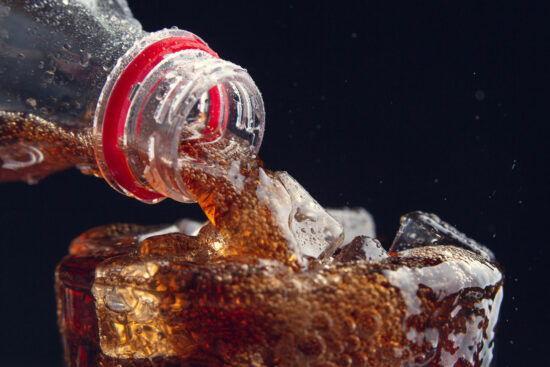
Introduction:
Are you ready to take control of your life and break free from the clutches of alcohol addiction? You’re not alone. In this comprehensive guide to quitting alcohol addiction, we’ll explore the journey to sobriety and discover how Pavlok, a powerful wearable device, can help you quit alcohol.
From understanding the science behind addiction to developing a personalized quitting strategy and harnessing the unique features of Pavlok, this guide will equip you with the knowledge and tools you need to embark on a transformative journey towards a healthier, happier life.
Let’s dive in and discover how you can quit alcohol with the help of Pavlok.
Understanding Alcohol Addiction
To effectively combat alcohol addiction, it’s crucial to understand its roots. In this section, we delve into the science behind addiction, exploring the impact of alcohol on the body and mind and providing you with the necessary knowledge and insight to navigate your journey to sobriety.
According to the National Council on Alcoholism and Drug Dependence, there are two levels of alcohol consumption: Moderate and Heavy. Moderate levels of alcohol consumption equals one drink per day for women and two drinks per day for men. Heavy levels of alcohol consumption defined as “binge drinking” equals five or more in a single month.
It should be noted that the criterion of “one drink” changes depending on the percentage of alcohol, and it is estimated that one fluid ounce can take an hour to metabolize.
- Beer: 12 fluid ounces at 5% alcohol = 1 drink
- Wine: 5 fluid ounces at 12% alcohol = 1 drink
- Liquor: 1.5 fluid ounces at 40% alcohol (80 proof) = 1 drink
Alcohol affects the brain’s reward system by altering the release of neurotransmitters, such as dopamine, which is responsible for feelings of pleasure and reward. With continued alcohol consumption, the brain adapts to the presence of alcohol and develops a tolerance, requiring higher amounts to achieve the same effects. This tolerance can lead to increased alcohol consumption, reinforcing the addictive cycle.
Moreover, alcohol abuse can lead to physical dependence, where the body becomes reliant on alcohol to function properly. When someone addicted to alcohol attempts to quit or reduce their intake, they may experience withdrawal symptoms such as anxiety, irritability, nausea, and tremors. Understanding these physiological processes can help you anticipate and manage withdrawal symptoms as you embark on your journey to sobriety.
Psychologically, alcohol addiction can also take a toll on mental health. Individuals may rely on alcohol as a coping mechanism to deal with stress, anxiety, or underlying emotional issues. However, the temporary relief provided by alcohol often exacerbates these problems in the long run, leading to a vicious cycle of dependence.
By gaining a deeper understanding of the science behind addiction, you can approach your journey to sobriety with greater insight and awareness. Recognizing the physiological and psychological aspects of alcohol addiction empowers you to make informed decisions, seek appropriate support, and develop effective strategies to overcome the challenges ahead.
Basic Facts
It is estimated that there are 88,000 deaths a year due to alcohol, and it is the third leading cause of death in the United States. Alcohol affects men and women differently. For example, it takes women longer to metabolize it; however, alcohol abuse is more common in men than in women.
In the world, over 2 billion people drink alcohol, and around 75 million people are affected by alcohol-related disorders.

Effects
According to drugabuse.com short term effects of alcohol may include some positive symptoms such as mild euphoria, mood enhancement, lowered anxiety, marked sedation. It should also be noted the negative short-term consequences such as impaired vision, delayed reaction time, confusion, vomiting, blackouts, loss of bladder control.
Long-term consequences may include cancer, hepatitis, scarring of the liver, and increased blood pressure which could lead to heart problems. Financially it takes a toll too.
According to a 2000 report on alcohol, the cost estimate for alcohol abuse was over 184 trillion dollars in 1998, which was up from a 1992 estimate of 148 trillion. These include the cost of loss of an individual, services such as counseling, criminal justice, and medical consequences.
Recognizing the Need for Change
Assessing the impact of alcohol on your life is a crucial wake-up call. This self-reflection is an essential step in finding the motivation to embark on the path to sobriety. In this section, we guide you through the process of recognizing the signs and symptoms of alcohol dependence, and help you identify the negative consequences alcohol has had on various aspects of your life, such as relationships, work, physical health, and emotional well-being.
Alcohol is the most used addictive substance in the United States, with 1 in 12 Americans suffering from alcohol abuse or dependency. Alcohol abuse does not only affect the person who uses alcohol, it also adversely affects everyone around them.
How Alcohol Effects the Brain and Body
Habit Analysis and Common Triggers
To best analyze a habit we first must devise it into three parts:
- The trigger, or what is evoking or eliciting the habit
- The habit itself
- The reward(s) granted by that habit
Triggers
- Alcohol addiction triggers vary and can be very subtle, but here are some to consider:
- Friends invitation to a bar
- A sign at a bar
- Being in a setting that sells liquor
- Lack of alternatives in the evening
- Holidays such as St. Patrick’s Day, the day before Thanksgiving, and birthdays
- Free samples are offered at stores
- Deals and specials
- An abundance of time waiting (airports, casinos, hotels)
- Social events
- Sporting events (Football games, Bowling, Darts)
Habits
Like triggers, habits may vary from case to case. It’s important to note which behaviors are acceptable and which are not. For example, many consider drinking at a bar to be acceptable, while drinking on the job is not. Of course, many of these habits depend on the individual circumstance.
- Hanging out at a bar alone or with friends
- Drinking at home alone
- Concealed drinking on the job
- Drinking and driving
- Binge drinking at parties
- Taking shots at parties
- Playing drinking games
- Drinking while watching sports
Rewards
- Social praise (Chug! Chug! Chug!)
- Social bonding as a chance to meet new people
- The “buzz” feeling of alcohol
- Passing out
- The escape of a less desirable situation
- “Liquid confidence”
- The taste
- A marker of celebration such as holidays, the end of a work week, and a completion of a task
- Inclusion in participation in a cultural event
- Access to other things such as pool, darts, food
Developing a Quitting Strategy
Setting clear goals and objectives is essential when quitting alcohol. We explore different quitting methods, such as cold turkey, tapering, therapy, and more. Additionally, we emphasize the importance of creating a support system to provide encouragement and accountability along the way.
Going Cold Turkey
This method involves quitting alcohol abruptly and completely. It requires strong determination and willpower, but it can be an effective approach for some individuals. It’s important to be prepared for withdrawal symptoms and have a support system in place to navigate the challenges that may arise.
Willpower alone is not enough
First of all, willpower by itself is not enough; it never is. You might start out strong and full of determination. But…
- What if you’ve had a horrible day at work?
- What if your toddler has been screaming all day?
- What if an idiot cuts you off on the street as you’re driving home?
For someone with a drinking habit, everyday events like these can be overwhelming triggers. You need a support system (see below) that will keep you in check when your will power takes a plunge. And it needs to be something that is concrete and dependable.
Tapering
Tapering off alcohol involves gradually reducing your alcohol intake over time. This approach allows your body to adjust more gradually, minimizing the severity of withdrawal symptoms. It can be a suitable option for those who have been consuming alcohol heavily for a prolonged period.
But the game is stacked against you
Everything around you is designed to push you towards failure. It’s inescapable.
- Bars at every street corner
- Tempting wine lists at restaurants
- Shelves stocked full of alcohol in supermarkets
- Ads on TV and social media
If your goal is to taper off alcohol consumption, you need to have clear goals. For example, establishing specific days you may consume alcohol during the month or how much money you can spend when you’re out, or telling the bartender to limit the amount you may consume when you’re there.
Which one of these is not a specific goal?
- A. I want to drink only one day a week
- B. I want drink less
- C. I want to spend $10 or less on alcohol this week
- D. Drinking is bad, I only want to drink after work on Friday
B is correct. Drinking less is not specific. You need to be specific about know how much.
Counseling and Support Groups
Seeking professional help through therapy or counseling can be highly beneficial when quitting alcohol. A therapist or counselor can help you explore the underlying causes of your addiction, develop coping mechanisms, and provide the necessary support throughout your journey.
Joining support groups, such as Alcoholics Anonymous (AA), can provide a sense of community and understanding. These groups offer a platform for sharing experiences, gaining support from others who have faced similar challenges, and learning from their journeys to recovery. Attending regular meetings and connecting with a sponsor can offer valuable guidance and encouragement.
Personalized Plan with Pavlok and Aversion Shock Therapy
Electric shocks beat alcoholism in 60% of cases
Pavlok as a starting point
Pavlok can help you identify and modify negative thought patterns and behaviors associated with alcohol use, and it will help you establish specific triggers and cues to interrupt the urge to drink.
For example, you can set up a vibration or electrical stimulation whenever you find yourself craving alcohol or in situations that typically lead to drinking. This instant feedback creates a consistent negative association with alcohol, helping to rewire your brain and weaken the desire to indulge.
Use Pavlok to track your progress and hold yourself accountable
Use Pavlok to let friends and family shock you!
Conclusion and Commitment:
It’s important to remember that there is no “microwave sobriety” – it does not exists. Nor is Pavlok a magic solution. If you feel that your drinking habit might be too much for you to handle on your own, you need to seek professional help.
But Pavlok is your first commitment to yourself. It’s with you, always, as a handy wearable wristband and powerful tool to help you get through each day on your path to sobriety. By incorporating Pavlok into your daily life, you can rewire your brain’s associations with alcohol, and enhance your chances of long-term success.










